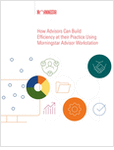The National Association of Insurance Commissioners (NAIC) is discussing a life insurance industry proposal to extend the principle-based reserve (PBR) transition period from three years to five years for smaller companies.
The American Council of Life Insurers (ACLI)’s nascent proposal would allow a life insurance company with direct life insurance premiums of less than $500 million per year and direct first-year premium less than $50 million to comply with the requirements of the adopted Valuation Manual-20 for PBR in four to five years after PBR is accepted as the standard.
See also: NAIC preview: PBR implementation plan gets serious
PBR itself still needs the okay from 42 state legislatures enveloping 75 percent of total U.S. premiums, and New York’s rejection of PBR may stall implementation further.
The small insurer extension proposal, discussed today during the Life Actuarial Task Force (LATF) conference call, is meant to “help control expenses for smaller companies in the process of implementing PBR.” More discussion on a more developed ACLI proposal is expected at the NAIC Winter Meeting in December in Washington.
The amendment proposal put forth by John Bruins of the ACLI reasons that “during the first three years after adoption in particular resources will be at a premium. This will allow smaller companies to delay implementation to a point where resources may be more affordable.”
Bruins asked LATF members on the call how to best define small companies under PBR, though, considering its impact.
One actuary raised the point that he doesn’t want to encourage a possible situation whereby big insurers try to game the system by spinning off their universal life with secondary guarantees (USLG) businesses into a subsidiary in order to fit under the small business category and get an extension.
Another state actuary said the standard should not be on size but on risk. “It’s risk that matters, not size of company,” the actuary said.
Bruins said on the call that if 80 percent to 90 percent of the industry premiums are captured during the first years of PBR, that would be considered a success, and that the other 10 percent to 15 percent of premiums representing perhaps more conservative products could wait until methodologies under PBR are down pat before PBR becomes a 100 percent requirement.








 October 03, 2013 at 08:16 AM
October 03, 2013 at 08:16 AM










